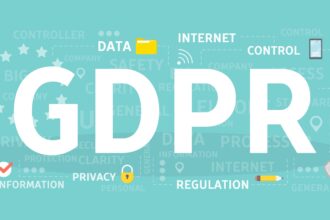AI technology has led to a lot of promising benefits. Unfortunately, it also has some downsides. Taylor and Francis Online talked about the dark side of AI in this article.
One of the downsides of AI is that it has led to an increase in ransomware attacks, primarily due to the sophistication and automation capabilities it offers to cybercriminals. The Verizon 2023 Data Breach Investigations Report (DBIR) revealed that ransomware was used in 24% of all cyberattacks. AI-powered tools enable attackers to conduct more targeted and effective campaigns by automating various stages of the attack process, including reconnaissance, infiltration, and payload delivery.
Moreover, AI algorithms can adapt and evolve in response to defensive measures, making it increasingly challenging for traditional cybersecurity defenses to detect and mitigate ransomware threats effectively. The ability of AI to generate convincing phishing emails, identify vulnerable systems, and exploit software vulnerabilities at scale has significantly lowered the barrier to entry for cybercriminals, leading to a surge in ransomware incidents across various industries. This is a terrifying threat to businesses.
Furthermore, AI-driven ransomware attacks pose unique challenges to organizations by exploiting weaknesses in AI-based security systems themselves. As defenders increasingly deploy AI-powered tools for threat detection and response, attackers are leveraging AI to evade detection, disguise malicious activities, and optimize ransomware payloads for maximum impact. This cat-and-mouse game between AI-driven cyberattacks and defenses underscores the need for continuous innovation and collaboration within the cybersecurity community to stay ahead of evolving threats. You can just look at the RYUK ransomware attack that was perpetuated with AI to get a better idea of how bad it can be.
Ultimately, while AI offers immense potential for improving efficiency and innovation, its dual-use nature also presents new risks that must be carefully managed to ensure the security and resilience of digital ecosystems. With the business landscape increasingly digitized and interconnected, cybersecurity has transitioned from a mere precaution to an indispensable element of any organization’s survival toolkit. The necessity for robust cybersecurity measures is underscored by the rising tide of ransomware attacks, which have become a formidable threat to entities ranging from small businesses to large governmental organizations.
Ransomware, a type of malicious malware designed to block access to a system (often a computer or even an entire server) until a sum of money is paid, exploits vulnerabilities within network defenses, causing significant financial and operational damage. The ingenuity and persistence of cybercriminals necessitate a proactive and knowledgeable approach to cybersecurity, making it critical for organizations to stay ahead of potential threats.
As ransomware attacks grow in sophistication and frequency, understanding and implementing advanced cybersecurity defenses is paramount in safeguarding digital assets and maintaining operational integrity.
This article will guide you through the ten tips for improving and enhancing your cybersecurity defenses to protect your business from ransomware attacks. So, with all that said, let’s begin.
10 Tips To Stop Ransomware Attacks
Conduct Regular Security Audits and Risk Assessments
Regular security audits and risk assessments are fundamental in identifying potential vulnerabilities within your network. By evaluating your current security posture, you can pinpoint weaknesses that could be exploited by ransomware and similar cybersecurity threats and implement measures to fortify your defenses.
This proactive approach ensures that your security protocols evolve in tandem with the shifting cyber threat landscape. Such measures enable organizations to adapt to new and emerging ransomware variants, ensuring defenses remain robust and resilient against evolving cyber threats.
Implement a Comprehensive Backup Strategy
A backup strategy is your safety net against ransomware. Ensure regular backups of critical data are performed and stored in a secure, off-site location. Employing a 3-2-1 backup rule—three total copies of your data, two of which are on different media and one stored off-site—can provide redundancy and mitigate the impact of a ransomware attack.
This strategy not only safeguards your data from being irretrievably lost but also empowers you to restore operations quickly, minimizing downtime and operational disruptions. By prioritizing data backup, organizations can maintain continuity and resilience in case of a potential cyber attack, ensuring that vital information remains accessible and secure under any circumstances.
Educate Your Workforce on Cybersecurity Best Practices
Human error often serves as an entry point for ransomware. Educating employees about cybersecurity best practices, including recognizing phishing attempts and safe internet browsing habits, is crucial. Regular training sessions can also reduce the risk of an employee inadvertently compromising your network’s security.
These initiatives should be ongoing, adapting to new threats and reinforcing the importance of vigilance. By fostering a cybersecurity-conscious culture, organizations empower their workforce to act as the first line of defense, effectively minimizing vulnerabilities and enhancing overall security posture.
Employ Advanced Threat Detection and Response Tools
Advanced threat detection and response tools can provide real-time monitoring and analysis of your network for suspicious activities. These tools rely on machine learning and AI to detect anomalies that may indicate a ransomware attack, enabling a swift response to mitigate potential damage.
The deployment of these technologies ensures continuous surveillance and protection, offering peace of mind and a more robust defense mechanism against the sophisticated tactics employed by cyber adversaries. By embracing these advanced solutions, organizations can proactively identify and neutralize threats before they escalate into full-blown attacks.
Enforce Strict Access Controls
It’s essential to limit access to sensitive information and critical systems. By doing so on a need-to-know basis, you can reduce the impact of a potential ransomware attack. Implementing role-based access controls and ensuring users have the minimum necessary permissions can help contain the spread of ransomware within your network.
This approach minimizes the attack surface and restricts the movement of potential threats across your systems. By carefully managing access rights and privileges, organizations can significantly mitigate the risk of internal and external breaches, ensuring that sensitive data remains secure against unauthorized access and exploitation.
Keep All Systems and Software Up to Date
Hackers or cybercriminals often exploit vulnerabilities in outdated software and systems to launch ransomware attacks. Regularly updating and patching your IT infrastructure can close these security gaps and protect against known threats.
Adopt Multi-Factor Authentication (MFA)
MFA should be a standout security feature for most businesses. What’s interesting is that most third-party software use MFA. So it makes sense not to adopt it. But what is MFA? MFA simply adds another layer of security by requiring employees to provide two or more verification factors to gain access to systems or applications. This can significantly hinder unauthorized access attempts, even if login credentials are compromised.
Implement Endpoint Protection Solutions
Endpoint protection solutions provide comprehensive security for all devices that connect to your network. These solutions can prevent, detect, and respond to various threats, including ransomware, ensuring that endpoints do not become the weak link in your cybersecurity defenses.
Develop a Cyber Incident Response Plan
Having a well-defined cyber incident response plan ensures your organization has the means and capabilities to respond quickly and effectively to any potential ransomware attack. This plan should include instructions and steps for isolating affected systems, communicating with stakeholders, and restoring operations with minimal downtime.
Collaborate with Cybersecurity Experts
Collaborating with cybersecurity experts can provide access to specialized knowledge and resources that enhance your organization’s defenses against ransomware. These professionals can offer insights into emerging threats and recommend advanced security measures tailored to your specific needs.
Wrapping Up
Strengthening your cybersecurity defenses against ransomware requires a multifaceted approach encompassing regular audits, education, advanced technology, and strategic planning. By implementing these tips, organizations can significantly reduce their vulnerability to ransomware attacks and protect their valuable digital assets.
As threats continue to evolve, staying informed and proactive in your cybersecurity efforts is essential for safeguarding your organization’s future in the digital realm. Through diligence and continuous improvement of security practices, we can collectively mitigate the threat of ransomware and ensure a more secure cyberspace for all.










